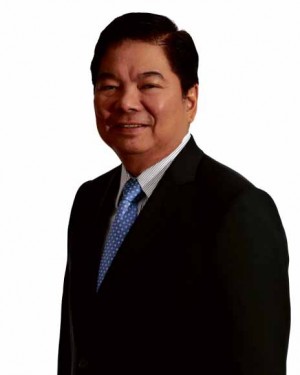Asean marches to a slow beat toward becoming a powerhouse
INTEGRATING Southeast Asia’s financial markets is expected to have wide-reaching effects on the 10-nation bloc. But the impact, for now at least, will likely be less of a blitzkrieg and more of a slow march.
The Association of Southeast Asian Nations (Asean) Economic Community (AEC) officially began at the start of the year. Few expect any major immediate changes. If policymakers in individual states stay on course and deliver on commitments to the whole, the region’s people will emerge more prosperous, and income gaps narrower.
“More open financial accounts could bring important benefits for Asean countries’ growth and development. Financial inclusion could increase and real convergence in per capita incomes could accelerate,” the International Monetary Fund (IMF) said.
“An important aspect of financial integration will be that the less financially developed economies will catch up with the more developed ones,” it said.
If done right, financial integration will play a crucial role in the success of Asean’s goal of transforming a diverse region into a single economic powerhouse—seen as possibly rivaling China’s manufacturing heft.
“The idea is that under integration, a Filipino investor would be able to take on financial instruments out of Hanoi nearly as seamlessly as investing in Manila itself,” Bangko Sentral ng Pilipinas (BSP) Governor Amando M. Tetangco Jr. said.
The central bank said the more significant target for the region’s financial sector was the year 2020—as opposed to the official launch of AEC at the end of 2015—at which time the Asean Financial Integration Framework or AFIF is expected to be in place.
Financial integration will involve three main parts: Financial services liberation to allow banks to operate anywhere in Asean, capital account liberalization to allow money to flow across borders unhindered, and capital market development.
The goal is the better use of the region’s resources. Money saved up or available for investments in one of the 10 countries should be able to fund projects or new businesses in other parts of the region.
Official data showed money saved by Southeast Asians was the equivalent of 31 percent of gross domestic product (GDP), which was 11 percentage points higher on average than the rest of the world. These resources need a repository before these can be intermediated or invested.
Marshaling resources held by banks should be complemented by the development of deeper financial markets, the Philippine central bank chief said.
While many jurisdictions in Asean—and Asia for that matter—remain bank-centric, the pressure on the banking books needs to be mitigated when loan maturities reach 15 years and up, generated from a funding base largely made up of short-term savings deposits.
“The gapping risk is significant and the global focus on liquidity risk makes this issue even more stark,” Tetangco said.
On the local front, the Philippines needs to play catch-up in terms of deepening its markets. The country has fewer than 300 listed firms, less than half the average of over 600 among Southeast Asia’s five largest economies. The volume of government securities trading among the so-called Asean-5 is also 50 percent larger than in the Philippines.
“The net effect, however, is that we have less liquidity in the secondary market and with that comes our challenges with benchmarks,” Tetangco said.
Freeing up the flow of manufactured goods within the region has proven challenging, despite the significant removal of most tariffs. Liberalizing capital flows may be just as challenging.
Plenty has been done to reduce trade barriers, at least as far as tariffs are concerned. More than 70 percent of total trade between member countries is currently conducted with zero tariffs.
But the AEC falls short when it comes to the bigger challenge of reducing non-tariff barriers and improving the region’s dreadful infrastructure, which makes trading between countries much harder, think tank Capital Economics said.
The firm said Asean, with its tradition of noninterference into the affairs of member countries, the absence of penalties for noncompliance, and its lack of a powerful central bureaucracy, was ill-equipped to tackle these obstacles.
Tetangco said a payments and settlements system that is holistic and efficient—facilitating both small and large transactions—would be required as the main backbone of the region’s financial markets. This must be supported by the necessary financial market infrastructures run under uncompromising standards of good governance and risk management.
All of these must be in place in each jurisdiction and then linked and aligned with the rest of the Southeast Asian jurisdictions.
Volatility in financial markets, which increases as integration deepens, has also been a deterrent to progress, the IMF said.
Theory and experience from other geographic regions suggest that greater financial openness could lead to greater volatility in some Asean countries. More closely-integrated markets mean a crisis in one jurisdiction has a bigger chance of spreading to others.
This risk is heightened by the varying levels of economic development within Asean, a region that counts as members both Singapore, a first-world city state, and Burma (Myanmar), a country where less than a third of people have reliable electricity.
“[Bouts of] volatility of cross-border capital flows since May 2013 related to the asynchronous unwinding of unconventional monetary policies in advanced economies serve as a reminder that the regional financial architecture is still a work in progress,” the multilateral firm said.
“In view of this … policymakers have been taking a cautious approach in moving forward with further financial and capital account liberalization.”
The way forward is fraught with challenges, and Asean seems content at moving toward its integration goal one slow step at a time.

